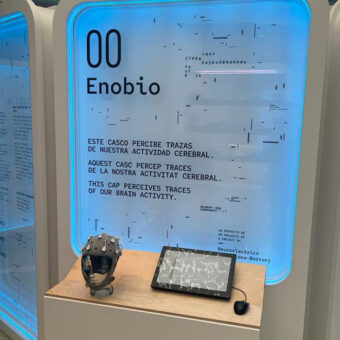My post today will deal with the future. I have recently attended a conference by Pankaj Ghemawat on the World 3.0 (well the conference had a more local component as well but I will try to focus on the more general aspects). As far as I understood the 3.0 world is characterized by the mixing of local and global dimensions in our daily lives. Other local experts were invited to give their views on upcoming technological, scientific, economic and societal trends and concepts (a usual exercise at the beginning of the year).
Technological trends
Being a Computational/Artificial Intelligence expert it was great to hear from Joan Parra (CEO of LEITAT) that the underlying methodologies are at the basis of future technological development. This statement is based on the fact that the smartization process (which began with smart devices but is extending e.g. to smart homes, factories, cities, and grids) and the explosion of Big Data applications make extensive usage of methodologies for prediction, categorization, and decision-making. This is exactly the role of classifiers and data fusion methodologies. I would add the Internet of Things, which is closely related to smart objects but adds the connectivity aspect, and wearables, which relate smart objects to users ubiquitously carrying them, as further application fields of AI. Analogously Big Data is currently related mostly to visualization technologies (i.e. visual analytics), which make partial use of classification and/or clustering for partitioning the data and then showing it, but it will really uptake as a useful technology when being exploited as inference machine.
Scientific trends
The scientific forecasting exercise in the event was encouraging as well. One of the main scientific goals of the next years is to completely decode brain functions. Joan Xavier Comella (Director at VHIR) mentioned the Human Brain Project and the Brain Initiative as the next milestones in human scientific knowledge. These public funded projects inspired in the Human Genome Project have found as well a private dimension led by Randal Koene. We are proud to be part of this general interest in brain function and neurotechnology. It is worth recalling at this point the progressive affordability of sequencing technologies. What started as a roughly $3 billion funded project has come up with technologies that allow nowadays to sequence a single genome for $1000, and even further to store it for $25 with Google. We expect neurotechnology to follow a similar path where easy to use and wearable devices will improve features and decrease price. We hope our own technological assets (Enobio & Starstim) play an important role in this general picture.
Already there
Some of these technologies are getting closer or even already transformed into products as shown in this year’s CES. Several wearables were already exhibited there as one can read in several blogs. Astonishingly enough what is interesting in a wearable object is not the object itself or its value but the fact that is worn by a subject. This enables the massive generation of personal data, which has been denoted as wearables 3.0. Such trend links Big Data and smart objects with Computational Intelligence / Machine Learning in between and spreads into health and wellness. All in all a well rounded story, don’t you think?





Nice post !.I am much learner as well as researcher that’s such posts had much worth according to me.It is very informative post .You described future well.